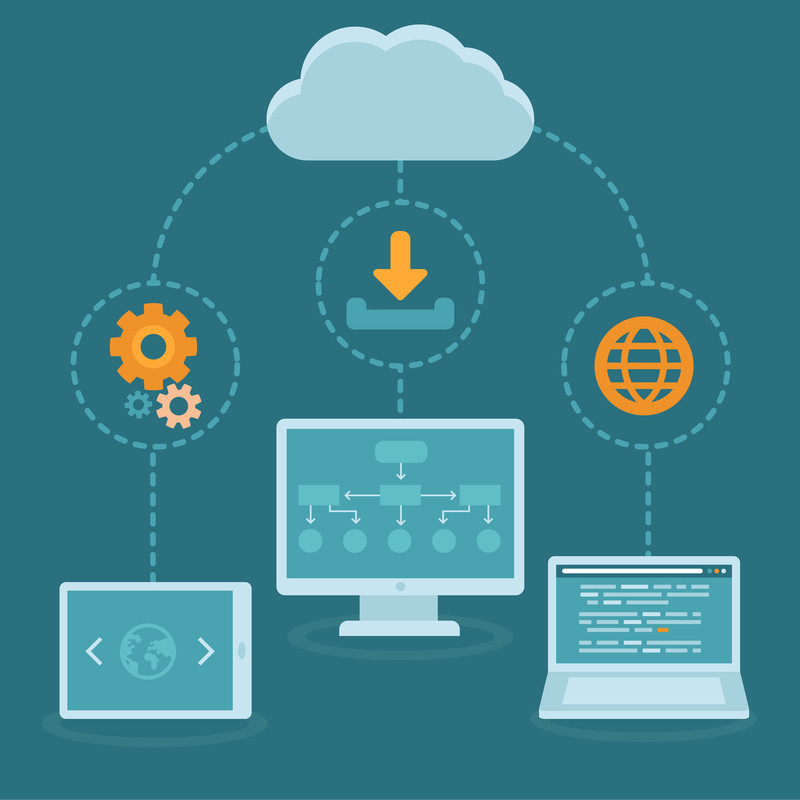Table of Contents
And to which direction it’s going
Among many industries that got a turbocharge thanks to Covid-19 pandemic, the dramatic rise of the usage of SaaS came as no surprise. This cloud model had a great head start even before the infamous 2020, gathering a global revenue of 102 billion dollars in 2019; for comparison, the runner-up, BPaaS was a mere 45 billion.
And while some claim it was the success of Salesforce that boosted the SaaS market, others pin it to the fact that TCO is matching the on-premise software deployment model. But the truth is, SaaS is sweet from every angle: it is adjustable to any company budget, it’s agile, flexible and versatile from both strategic and operational perspective. Finally, SaaS promises and delivers numerous benefits to the user, the central figure which will enable this blooming cloud market to remain the leader for years to come.
We can tell that by looking at SaaS trends which are likely to shape the market in 2021.
SaaS is becoming smarter
There are a few main reasons why the above-mentioned user turns to SaaS solutions, reasons which seem to be emphasized with the beginning of the 2nd decade of the 2nd millennia.
First motivation, I dare to say, is to ditch the repetitive tasks and automate as many aspects of a project as possible. Enter AI and machine learning. After looking at some of the unmatching deliverables this SaaS trend brings to customers, you simply know it’s here to stay. Case in point: a whole new level of personalization, intent data and behaviour prediction, faster security threat identification and remediation, and so on. Midsize companies are happily taking over the AI/ML SaaS trends from trailblazers such as Google, IBM and Microsoft, so we can expect the predictive analytics and natural language processing soon to go from ground-breaking to the mainstream.
The size of SaaS matters
“A SaaS business targeting a niche market, run by one person or a very small team, with small costs, a narrow focus, a small but dedicated user base and no outside funding. Hence, micro-SaaS.”
Tyler Tringas, storemapper.com
It’s safe to say 2020 was a test year which demonstrated the whole array of client’s needs and pain points to the emerging SaaS market. In a market as saturated as this one, many competitive companies and startups went in the same direction looking for a way to clear out the noise: this is how micro-SaaS was born.
A newly coined term, micro-SaaS stands for an offer that answers a very particular customer’s need. It’s not hard to guess why SaaS trends like this one have a bright future: users are attracted to the niche solution that hits the spot, while a micro-SaaS owner is able to grow in the market with a minimum (or no) investment and hassle. It will be very interesting (and it already is!) to follow how this trend unfolds, as we expect yet the more granular approach to even more concrete and niche demands. Hey, I guess they can always use AI to learn what users need and will be needing soon. Is it too early to talk about nano-SaaS?
It's never too early to talk about SaaS scalability
Provide your SaaS with room to growSaaS is on the move
Going mobile has been omnipresent for a decade now, and surely it’s entering SaaS pores, too. As there are more mobile than PC users in the world, mobile SaaS is not only inevitable; it’s a long-term, standalone trend with users accustomed to an even higher level of functionality, personalization, and accessibility. Shifting from web to mobile is no picnic and even giants struggled in creating an app that users will love and use. As our behaviour on mobile devices differs from desktop usage, so does the design and development process; native apps are less flexible than websites and more challenging to fix and improve. Not just that; if your app is not meeting the expectations, it will quickly backfire and users will delete it. Take Hotjar’s word for it. However, according to numerous global statistics, going mobile is well worth the trouble.

…And it’s (more) simple to make!
Welcome to the age of drag-and-drop 🙂 Out of plenty of SaaS trends, we can expect to see in 2021, this one is my favourite. Thanks to the rise of low-code and no-code SaaS platforms, is it becoming easier, more affordable and flexible to roll out a software product to the market. With a low-code platform, you are creating an app with an array of tools, using a visual interface and drag-and-drop functionality instead of written lines of code. These development environments can produce entire apps or create additional features without senior development knowledge. The choice of such development platforms is rising, much to a delight of companies who discovered a new, simpler, more fluent and standardised process of adding a SaaS to their portfolio. Will this result in an ever more crowded market? Sure, but the beauty of agile methodology will prevail as the quality solution designers will listen to users’ feedback, improve and adjust, weeding out the quick win wannabes from the offer.
There are plenty of SaaS trends that didn’t make it to this shortlist, such as vertical or white labelling, but this just further bolsters the claim that 2021 will be a year of SaaS. No matter trends, as long as they carry the beauty of scalability and accessibility only a cloud model can offer, the SaaS potentials will continue to delight the users and encourage the creators to be bold and creative.
